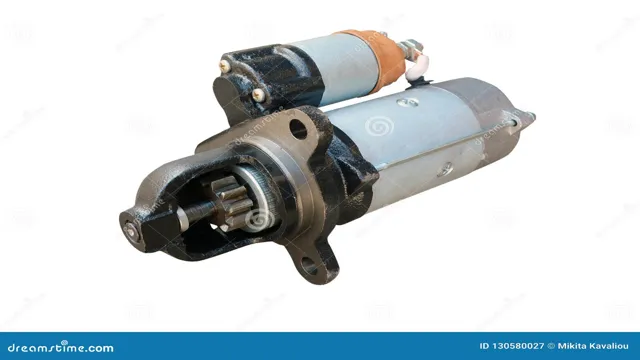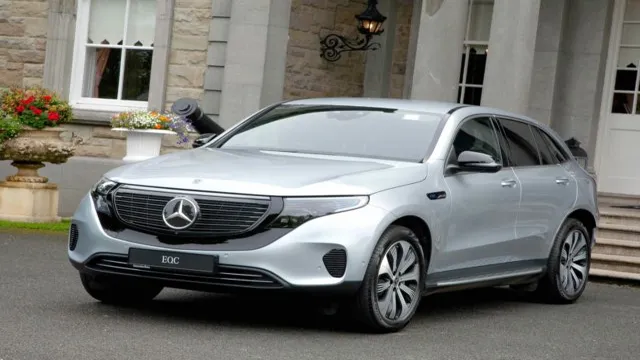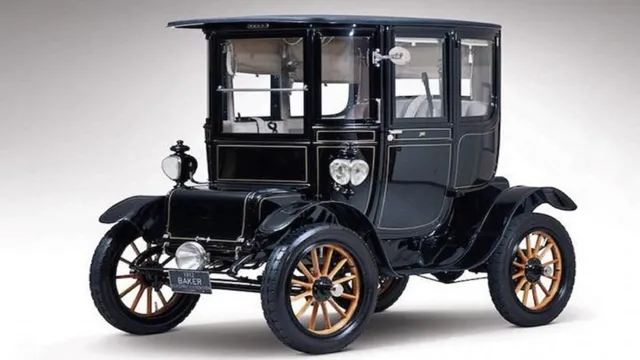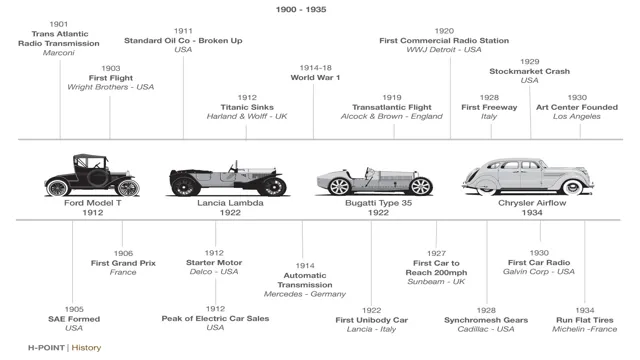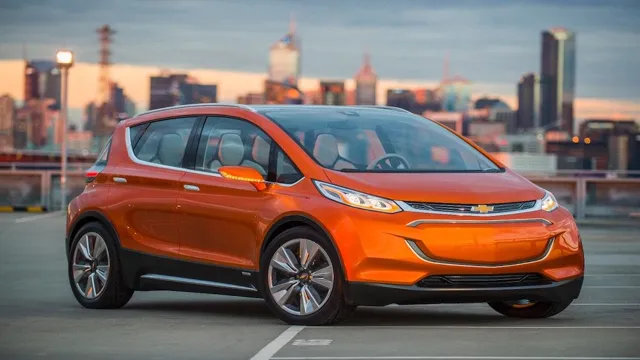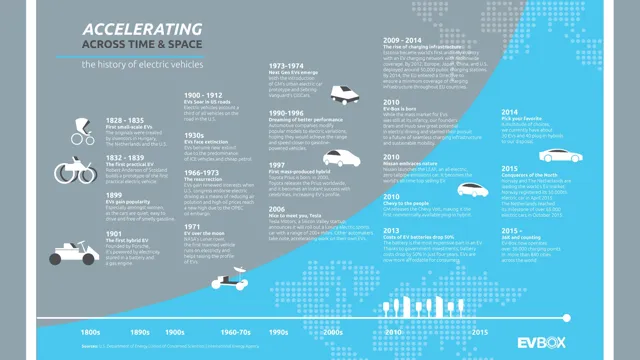The Electrifying Evolution of Car Electric Starters: A Historical Insight
Remember the days of turning a crank to start your car? Well, luckily, we don’t have to go through that anymore. Today, electric starters are a standard feature in most vehicles. However, the evolution of this feature didn’t happen overnight.
In fact, it took many years of innovation and development to get to where we are today. From the early days of hand cranks to the electrical advancements of the 21st century, the evolution of car electric starters has been a fascinating journey that has made driving safer and more convenient than ever before. So, how did we get to this point? Let’s take a closer look.
Early Automotive Starting Systems
Car electric starter history dates back to the early 1900s when starting an engine involved turning a crank by hand. This method was not only cumbersome and physically demanding but also dangerous. The introduction of electric starters in the mid-1910s transformed the automotive industry as it made starting a car as simple as turning a key.
The electric starter system consisted of a battery, a solenoid, and a starter motor. When the driver turned the ignition key, it sent an electrical signal to the solenoid, activating the starter motor. The motor rotated the engine’s flywheel, causing it to start and engage the internal combustion process.
Although early electric starter systems were prone to failure, they marked a significant evolution in automotive technology. Today’s electric starters are highly sophisticated and reliable, making starting a car a breeze. With the push of a button or the turn of a key, drivers can effortlessly start their engines and be on their way.
Cranking It Up: The Hand Crank Era
The early days of the automotive industry were marked by hand cranked starter systems. These systems required a person to physically crank the engine in order to get the car started. While this may seem outdated and cumbersome by today’s standards, it was a huge advancement at the time.
Before the hand crank, cars had to be started by manually turning a crankshaft. The hand crank made it much easier to get the engine started, and helped to pave the way for the electric starter system that we use today. However, hand cranked systems were not without their drawbacks.
They could be difficult to use for some people, particularly those with physical impairments. Additionally, there was a risk of injury if the crank backfired or flew off while in use. Overall, while the hand crank was an important step in the evolution of automotive technology, it was not without its challenges.
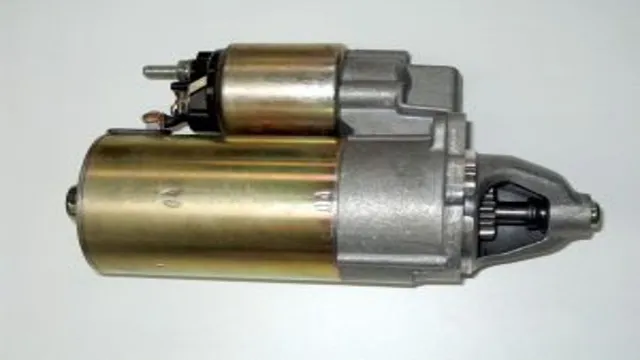
The Electric Starter Emerges
The electric starter system is an essential component in modern automobiles, but things were not always so convenient. Early automobiles were notoriously difficult to start, necessitating hand cranking. If the driver did not possess sufficient strength or technique, they were unable to get the motor running.
The electric starter first emerged in the late 1800s. These initial models were costly and large, making them an impractical choice for the average driver. In the early 1900s, Cadillac took the lead in making electric starters an industry standard.
By the 1920s, electric starters were standard in most American-made cars. Today, we take this technology for granted, but its development revolutionized the automotive industry. Imagine having to crank your car engine to life every time – driving would not be so enjoyable.
Advances in Electric Starter Technology
Car electric starter history goes back over a century, and the technology has come a long way since its inception. In the early days, drivers had to hand-crank their cars to start them, which was not only time-consuming but also physically demanding. Then, in 1911, the first electric starter was introduced.
This innovation turned the ignition process into a simple push-button affair. However, electric starters were not without their flaws. Initially, they were heavy, complicated, and expensive to produce.
Over the years, advances in technology have made electric starters lighter, smaller, and more reliable. In recent years, some automakers have even begun to experiment with alternative starter technologies, such as regenerative braking systems that use the car’s kinetic energy to generate electricity. As cars move towards electrification and automation, the evolution of electric starter technology will undoubtedly continue, making car ignition even more effortless and efficient.
Redesigning the Starter for Mass Production
The advancements in electric starter technology have enabled the redesigning of the starter for mass production. This means that more and more cars are being equipped with reliable, efficient and robust starters that make starting the engine seamless. With the introduction of electric starters, drivers no longer have to rely on hand crank starters or other traditional means of starting a car.
This advancement has also allowed for the integration of other features such as push button start and keyless entry. The result is a more comfortable and convenient driving experience for drivers. Overall, the advancements in electric starter technology have been a game-changer in the automotive industry, enabling mass production of cars with more advanced starters and delivering better experiences to drivers.
Improving the Reliability and Efficiency of Electric Starters
Electric Starter Technology Electric starter technology has come a long way in improving the reliability and efficiency of starters. Traditional starters relied on a solenoid to engage the starter motor, which caused wear and tear over time. However, modern electric starter systems use solid-state relays or contactors that have a longer lifespan and provide reliable performance.
Additionally, advancements in battery technology have allowed for more powerful and longer-lasting electric starters. Hybrid electric starter systems are also becoming more popular, especially in the automotive industry, which combines the mechanical system with a small electric motor. This results in a faster and smoother engine start, as well as better fuel efficiency.
Overall, these innovations in electric starter technology have made starting engines more convenient, efficient, and reliable.
Innovative Developments in Starter Motors
Starter Motors When it comes to starting an engine, a reliable starter motor is essential. With the rise of electric vehicles, there have been some innovative developments in starter motor technology. One of the most significant advances is the use of brushless starter motors.
These motors have fewer parts and are more efficient than their traditional counterparts. Another development is the use of intelligent starters that can communicate with the vehicle’s computer system to optimize performance. And while electric vehicles may not require starter motors in the traditional sense, they still require some form of motor to engage the drive system.
So, advancements in starter motor technology will continue to play a crucial role in the evolution of electric powertrains. Overall, it’s exciting to see how innovative technology is transforming the way we start our vehicles.
Electric Starters in Modern Cars
The electric starter revolutionized the automotive industry, marking a significant step forward in car technology. Before electric starters, cars were started by hand-cranking the engine, a process that was difficult and dangerous, requiring a strong arm and skill. It was common for early drivers to experience severe injuries or even death from hand-cranking accidents.
In 1911, Charles Kettering invented the first electric starter, which eliminated the need for hand-cranking. The electric starter became a standard feature in automobiles by the 1920s, making it easier for people to operate cars and contributing to a surge in their popularity. Today, electric starters are common in almost every car, and most drivers have never experienced the challenge of hand-cranking their engine.
The invention of the electric starter was a turning point in car technology history, making it possible for people to enjoy the convenience of modern automobiles without the risks and challenges of the past.
The Rise of Keyless Entry and Push-Button Start
As we move into an increasingly digitized age, keyless entry systems and push-button start technology have become a popular feature in modern cars. This convenience is made possible by electric starters, which replaced the crankshaft used in early car models. Electric starters revolutionized the automotive industry, allowing drivers to simply turn a key or press a button to start their vehicle.
The technology has advanced in recent years, with keyless entry allowing drivers to simply approach their car and have it unlock automatically. Similarly, push-button start technology eliminates the need for a physical key altogether, with the car starting at the push of a button. While some may miss the tactile experience of turning a key in the ignition, these advancements demonstrate the continual progression of technology in the automotive industry.
Electric Cars and the Future of Starting Systems
As electric cars become more prevalent, the future of starting systems is changing. Unlike conventional combustion engines, electric vehicles don’t require a starter motor to crank the engine. Instead, the electric motor is always ready to go.
Modern electric cars are equipped with onboard computers that can instantly switch on the motor when the driver turns the power switch. This has several benefits, including a simpler starting process and improved efficiency. Additionally, electric starters eliminate the need for routine maintenance and replacements associated with starter motors in traditional cars.
While electric vehicle technology is still in its early stages, it’s clear that electric start systems are far more reliable and efficient than their gasoline-powered counterparts. As more people switch to electric cars, expect to see more innovations and improvements in electric starting systems.
Conclusion: The Impact of Electric Starters on Transportation
And thus, dear readers, we come to the end of our intriguing dive into the history of car electric starters. From the days of hand-cranking a vehicle to life, to the convenience of simply pressing a button, automotive technology has come a long way. We’ve seen the likes of John H.
Lamper and Charles F. Kettering revolutionize the industry with their inventions and innovations. Now, starting your car is as easy as sipping your morning coffee.
It’s safe to say that without the electric starter, we would all be breaking a sweat every time we had to go somewhere. So next time you get into your car and turn on the ignition, take a moment to appreciate the marvel of modern engineering that made it all possible. As they say, the rest is history – or in this case, the start of a new era.
FAQs
What is the history of the electric starter in cars?
The electric starter was first introduced in cars in 1912 by Cadillac, replacing the previous method of hand-cranking the engine.
Who invented the electric starter for cars?
The electric starter was invented by Charles Kettering, an engineer and inventor for General Motors.
How did the electric starter change the way people drove cars?
With the electric starter, drivers no longer needed to manually crank the engine, making it easier and safer to start the car. It also allowed for the development of larger, more powerful engines in cars.
Are all cars equipped with electric starters today?
Yes, all modern cars are equipped with electric starters as standard, making starting the car a simple process for drivers.
